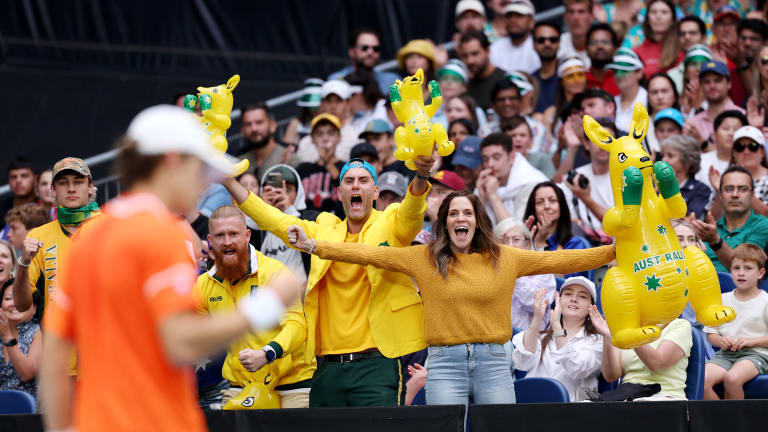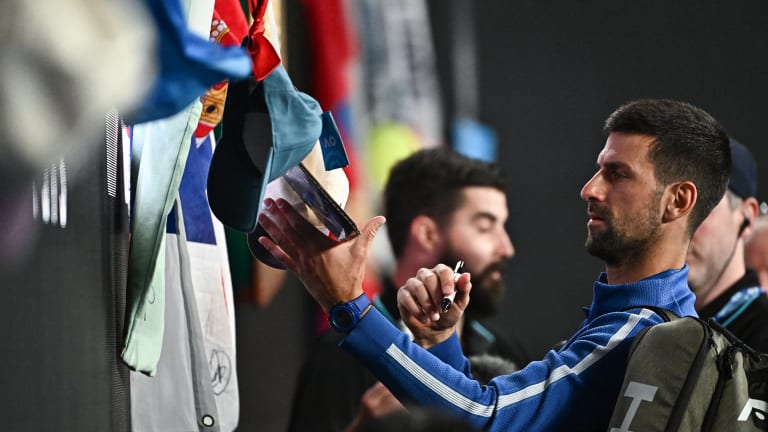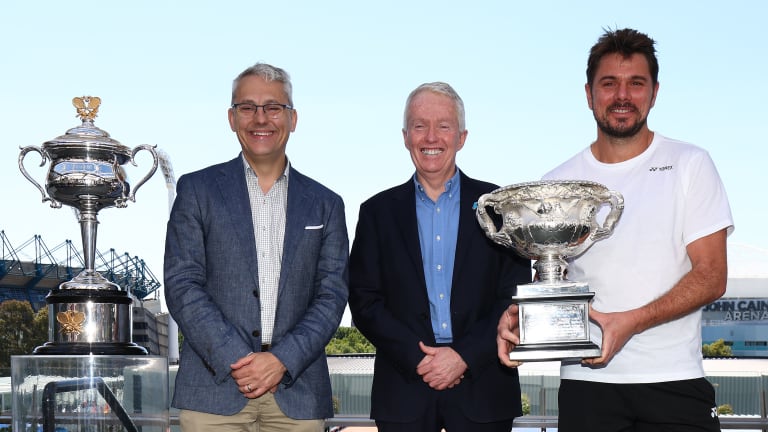Australian Open
The Australian Open’s radical idea is right: Ticket-holders should be allowed to watch as much tennis as possible
By Jan 19, 2024Australian Open
Roger Federer to headline “Battle of the World No.1s” at Australian Open’s inaugural Opening Ceremony
By Dec 11, 2025Australian Open
Australia at Last: Reflections on a first trip to the AO
By Jan 29, 2025Australian Open
Alexander Zverev must elevate his game when it most counts—and keep it there
By Jan 27, 2025Australian Open
Jannik Sinner draws Novak Djokovic comparisons from Alexander Zverev after Australian Open final
By Jan 26, 2025Australian Open
Alexander Zverev left to say "I'm just not good enough" as Jannik Sinner retains Australian Open title
By Jan 26, 2025Australian Open
Jannik Sinner is now 3-0 in Grand Slam finals after winning second Australian Open title
By Jan 26, 2025Australian Open
Taylor Townsend and Katerina Siniakova win second women's doubles major together at the Australian Open
By Jan 26, 2025Australian Open
Madison Keys wins her first Grand Slam title at Australian Open by caring a little bit less
By Jan 25, 2025Australian Open
Henry Patten, Harri Heliovaara shrug off contentious first set to win Australian Open doubles title
By Jan 25, 2025The Australian Open’s radical idea is right: Ticket-holders should be allowed to watch as much tennis as possible
Tournament director Craig Tiley's latest innovation—increased fan movement in the stands—has been met with mixed reviews from players.
Published Jan 19, 2024
Advertising

The break from tradition of allowing fans to sit down during even games has been met with mixed reviews from players.
© Getty Images
Advertising

Djokovic was sympathetic to the logic behind the change, but had his own opinions on whether it was actually constructive.
© AFP or licensors
Advertising

AO tournament director Tiley (center) has had a history of making bold moves for the betterment of the fan experience.
© Getty Images